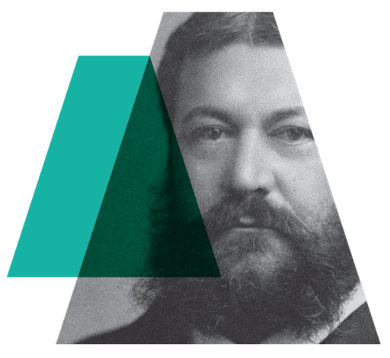
A Rich History
Buffalo’s history is rich with stories of culture, progress, and resilience. The City of Good Neighbors has seen many seasons of change to become what it is today.
Early Buffalo History
Buffalo’s story is one of growth, innovation, and incredible energy. When the Erie Canal opened in 1825, this small lakeside village of just 2,400 people quickly became a bustling center of trade and travel. Within decades, Buffalo was one of America’s fastest-growing cities—by 1900, it ranked 8th largest population in the country.
That wealth and creativity shaped the Buffalo we know today—home to remarkable art, culture, and architecture. The city boasts works by H.H. Richardson, Louis Sullivan, and Frank Lloyd Wright, as well as the country’s first female professional architect, Louise Blanchard Bethune.
From pioneering the grain silo to building luxury Pierce-Arrow automobiles and powering the steel industry, Buffalo was truly a city of innovation. Its legacy of craftsmanship, creativity, and community continues to inspire everything here today.
Site History
The Richardson Olmsted Campus, now home to The Richardson Hotel, is one of Buffalo’s most iconic landmarks. Designed in the late 1800s by renowned architect H.H. Richardson with landscape design by Frederick Law Olmsted and Calvert Vaux, the site beautifully blends historic architecture with tranquil green space.
Originally built as a groundbreaking center for mental health treatment, the campus stood as a symbol of innovation and compassion. Over time, the buildings were vacated and fell into disrepair until their restoration began in the early 2000s.
Today, the revitalized Towers Building and its adjoining wings welcome guests as The Richardson Hotel—where history, design, and hospitality come together. Future plans include the Lipsey Architecture Center Buffalo, celebrating the city’s rich architectural legacy.
The Architects
The monumental project was led by four important thinkers of the 19th century:
- Thomas Story Kirkbride, a founder of the Association of Medical Superintendents of American Institutions for the Insane, a precursor to the American Psychiatric Association. He advocated for a humane approach to mental healthcare through architectural design that promoted sunlight and ventilation, significantly influencing the construction of mental institutions across North America.
- American landscape architect Frederick Law Olmsted, who designed Central Park in New York City, as well as Buffalo’s beautiful system of parks and parkways.
- American architect Henry Hobson Richardson, the father of Richardsonian Romanesque architectural style.
Together, the team incorporated the most enlightened humane principles in psychiatric treatment of the times. Over time, mental health treatment changed, and the buildings and the grounds changed along with it. Stepping back through history, year by year, this is the ongoing story of the Richardson Olmsted Campus.



